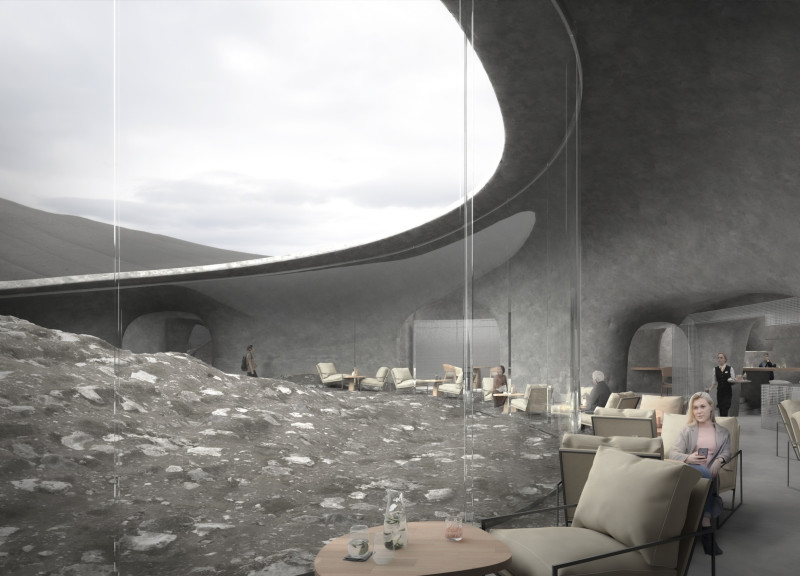5 key facts about this project
The Volcano Coffee Shop is located in the volcanic landscape of Iceland, serving as a central hub for hikers and visitors. The design aims to blend with the natural environment, minimizing visual and physical disruption to the area. By placing much of the building underground, it respects the geological integrity of the site while fulfilling its function.
Architectural Organization
The design is divided into functional zones that cater to the needs of different visitors. Each zone is distinct yet encourages interaction among users involved in various activities. The intent is to create an engaging experience that enhances the connection to the volcanic landscape. Clear pathways have been laid out to ensure smooth movement between exhibition areas, consultation spaces, and visitor services.
Spatial Dynamics and Form
A key aspect of the Volcano Coffee Shop is its dome space, which adapts to the specific functions within the building. This flexibility allows for different scales and activities without conflicts between them. The architectural form features varying heights, which enhances visibility and contributes to the overall spatial experience.
Materiality and Energy Efficiency
The main materials include formwork concrete for the walls and volcanic rock for the interiors, reflecting the local environment. This choice reinforces the connection to the surrounding landscape and enhances the building's character. Additionally, the earth-sheltered design improves energy efficiency by utilizing the stable temperature of the soil, which helps reduce heating needs and lower long-term costs.
Natural Light Interaction
Strategic openings throughout the building provide views of the nearby volcano, creating a connection between the interior and exterior. This design consideration not only allows natural light to fill the space but also enhances the visitor experience. The natural scenery becomes a part of the journey, emphasizing the tactile qualities of the materials used and creating an inviting atmosphere.






















































